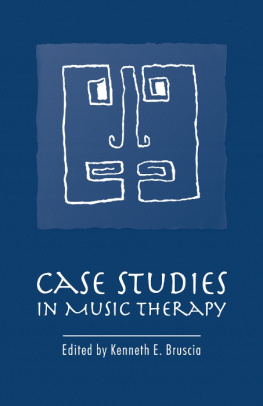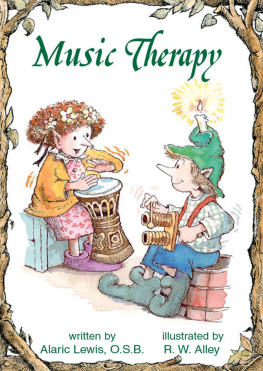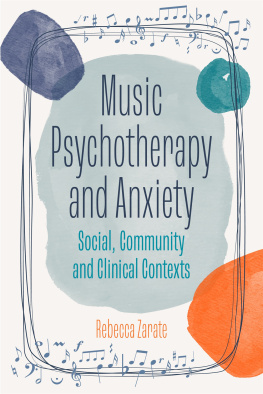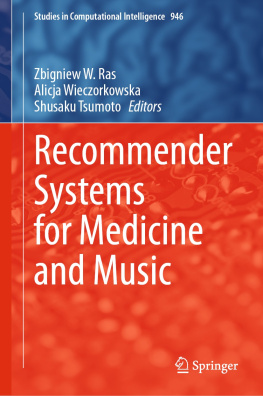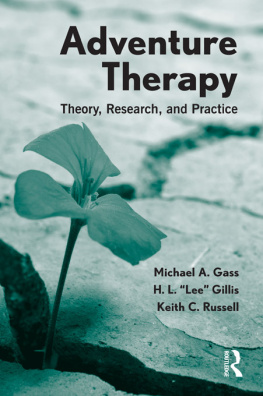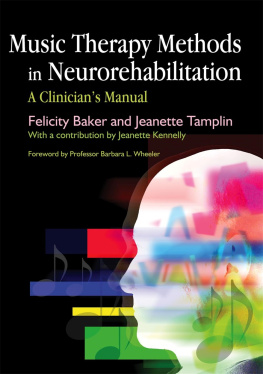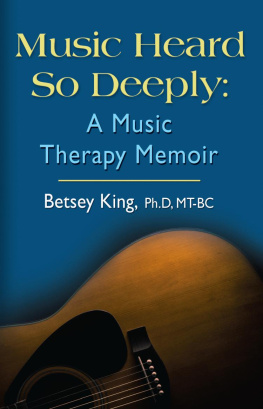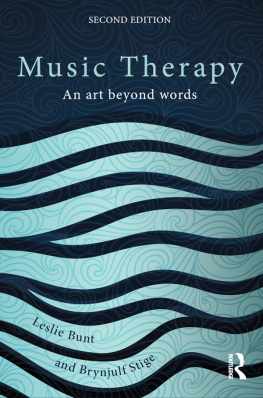
CASE STUDIES
IN MUSIC THERAPY
_________________________
Edited by Kenneth E. Bruscia

Case Studies In Music Therapy
Copyright 1991 by Barcelona Publishers
1st Printing 1991
2nd Printing 1996
3rd Printing 2006
All rights reserved. No part of this book may be reproduced in any form whatsoever, including by photocopying, on audio- or videotape, by any electronic means, or in information storage and retrieval systems.
For permission to reproduce, contact
Barcelona Publishers.
ISBN 0-9624080-1-8
LC 91-072288
Distributed throughout the world by:
Barcelona Publishers
4 White Brook Road
Gilsum NH 03448
Tel: 603-357-0236 Fax: 603-357-2073
Website: www.barcelonapublishers.com
SAN 298-6299
Cover illustration taken from artwork of unknown origin Cover design: 1991 Frank McShane
Acknowledgements of other publishers for permission to reprint copyrighted materials may be found at the end of each case study.
ACKNOWLEDGEMENTS
With Deepest Gratitude
To the individuals whose stories are told in these case studies. Sincere thanks are extended for allowing the authors to share with the readers personal obstacles and triumphs encountered in music therapy.
DEDICATION
This book is a testament of the generosity and love of the authors. As therapists, they have generously given themselves to their clients, providing them with loving and healing therapeutic relationships. As musicians, they have generously shared their talents and expertise, helping to bring the joys and healing powers of music to their clients. As writers, they have generously given of themselves to their professiontaking the risks of self-disclosure, and struggling with great determination to describe the many ineffable experiences of music therapy. And finally, as authors, they have generously contributed their case studies to the present book. In appreciation and respect for their generosity and love, this book is dedicated...
TO THE AUTHORS
Jo Solas, David Gonzalez, Helen Shoemark, Tony Wigram, Carol Robbins, Clive Robbins, Edith Lecourt, Fran Herman, Kenneth Aigen, Kerry Burke, Pamela Bartram, Rebecca Loveszy, Amelia Oldfield, Julie Hibben, Alice-Ann Darrow, Nicki Cohen, Helen Henderson, Claire Lefebvre, Janice Dvorkin, Kenneth Aigen, Benedikte Scheiby, Diane Austin, Rhonda Rinker, Marilyn Clark, Carolyn Kenny, Elizabeth Moffitt, Rosemary Fischer, Ginger Clarkson, Jose van den Hurk, Henk Smeijsters, Gabriella Perilli, Helen Miller, Phyllis Boone, Paul Nolan, Marcia Murphy, Georgia Smith, Eugenia Pickett, C. John Duey, Dianne Allison Nancy McMaster, Denise Erdonmez, Alicia Clair, Jane Whittall, Cheryl Beggs, and Jenny Martin.
PREFACE
This book presents 42 case histories, each describing the process of music therapy over an extended period of time. The cases include children, adolescents, and adults receiving individual or group therapy in educational, psychiatric, medical or private settings. Examples are given of a broad spectrum of methods, techniques, and theoretical orientations.
The authors are highly qualified music therapists, and as the cases clearly illustrate, each therapist has very unique skills and areas of expertiseas musician and clinician. Authors from nine countries are represented: the United States, Canada, Great Britain, Australia, France, Republic of South Africa, Denmark, The Netherlands, and Italy.
The book is intended for students and professionals in music therapy and related disciplines. Hopefully, it will be useful as a reference, a training text, and an introduction to the field. The authors and editor have made every effort to make the material accessible to the widest readershipthrough clear, organized writing and through the elimination of as much jargon as possible. Nevertheless, it is unavoidable that some cases will contain concepts or discussions that will challenge the reader. Given the complexity of clinical work, and the depth of certain procedures, there is no way to insure that all of the cases will be completely accessible to every reader, or that every reader will be able to achieve a full or mature understanding of every method, approach or subtlety of music therapy detailed in this book.
Thus, when used in introductory courses for students outside of the field, or when used as required course readings for music therapy students, the instructor would be well-advised to carefully select those cases that will be most accessible to their students.
Two features of the book are important to consider. First, there is a glossary at the end of every case study. These glossaries provide definitions of diagnostic or technical terms which are not explained in the narrative. In most cases, the terms pertain to clinical conditions, symptoms, therapeutic techniques, or theoretical concepts. All terms defined in the glossary are indicated in the narrative with bold italics.
Second, it was not possible to provide definitions of musical terms and concepts, either through individual glossaries or one for the entire book. The reason is that, a rather large music vocabulary has been used, at least in certain case studies; thus to attempt to define all of the terms would have necessitated writing an entire music dictionary. On the other hand, the majority of case studies do not require the reader to have any knowledge of musical terminology.
A special note is also in order with regard to general vocabulary and spelling. Given that the authors come from so many different countries, and that the English language is written, spoken and spelled quite differently from one country to the next (even where English is the native tongue), readers will undoubtedly find variations in the way words are used and spelled. Throughout the book, the original spellings of the authors have been honored by the editor. Thus, British readers will recognise that Americans do not put a u in behavior, as do the Canadians and South Africans; and that Australians, unlike Americans, prefer to spell improvise with a z rather than an s, which is certainly contradictory for the Americans because they spell realise with a z. Whilst this creates inconsistencies between case studies, it makes for greater consistency within cases, especially where such words appear in both narrative and quotations (which are unalterable). More importantly, it became quite clear that the way each author used and spelled words gave important clues to their unique perspectives on music therapy and their clients, and that to change these aspects of their writings was tantamount to ignoring their cultural, national, and regional identities. It is hoped that honoring the authors language will make readers more comfortable with case studies from their own countries, while also reminding them of differences in perspectives when reading those from other countries.
As for differences in actual vocabulary or word usage, adjustments were made by the editor only with the authors consent, and only when differences in meaning or usage might have caused misunderstanding or confusion among the readers.
As for how the book is organized, Unit One provides an overview of music therapy practice written by the editor. Its purpose is to introduce students and professionals in other disciplines to the basic parameters of clinical work in music therapy. The remaining units contain the case studies, which have been grouped according to the clients age and treatment setting. Unit Two contains case studies with children (up to 13 years); Unit Three contains cases with adolescents (13-18 years); Units Four, Five and Six are devoted to cases with adults in private, psychiatric, and medical settings, respectively.
Next page
